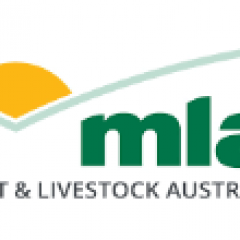Tom and Marie Copley understand that to achieve their business goals and breeding objectives, functional analysed genetics are essential.
Genetic progress became the focus on their property, ‘Salty’, in 1986, when they started purchasing analysed genetics.
This has been refined with 35 years of disciplined herd management and breeding decisions for incremental gains.
One of the key elements for the Copleys to boost production is the use of analysis in their Brahman herd to increase reproduction rate, reduce mortality and increase sale weight.

Fertility focus
“Fertility is a key determinant of profitability and productivity, which is why from the beginning our focus has been on having a highly fertile and efficient cow herd,” Tom said.
For the Copleys, a maternal database provides the framework to drive fertility outcomes through sound decision making.
“The database helps us to avoid being distracted by seemingly easy solutions to complex problems and keeps us and our herd accountable,” Marie said.
Because the Copleys value fertility, the EBVs they target when buying bulls are ‘days to calving’ and ‘scrotal circumference’. They place additional emphasis on selecting for early puberty and on the evidence of generations of maternal success.
They also drive fertility in their females by joining all heifers and culling any that are not pregnant after a tight joining.
“We don’t compromise – we want our cows to have a calf each year, on time and as early as possible,” Marie said.
A long-term objective paying off
Copley heifers analysed in the Northern Genomics Project reflect their breeding objectives and focus on fertility, with over 50% of the group in the top 20th percentile for puberty and body condition score while being moderately framed.
A long-term focus on their breeding objectives is illustrated by the comparison of the key EBVs of bull teams, from the first analysed team in 1985/86 to the 20/21 bull team.
Days to calving EBV has improved from -1.6 in 1986 to -15.8 in the current year.
Purchasing and applying genetics
When purchasing genetics, the Copleys seek out a seedstock producer who can provide comprehensive genetic information from a herd raised and managed under the same conditions in which their daughters will operate.
“I use the sporting metaphor of training how you want to play when it comes to buying genetics,” Tom said.
“You need to find a seedstock producer who is capable of providing the genetics to support your business needs,” Marie said.
The Copleys also said use of the $ indices when buying can help simplify the process.
“Looking through pages of EBVs can be a bit daunting, but the dollar indices draw from each bull’s data to give a ranking of the value of that bull to your business in economic terms,” Marie said.
Natural progression to seedstock
After years of utilising a systematic approach of management, herd recording and careful selection of analysed genetics, the Copleys are confident in the fertility and functionality of their commercial herd.
“We have taken the next logical step to seedstock production. To support and enhance the accuracy of the EBVs, we genomically tested the entire herd and entered all their phenotypical data into Brahman BREEDPLAN,” Tom said.
Tom was pleased to note that the herd EBVs were an absolute reflection of their consistent breeding objectives and management over time.
More information: Mr James Copley, PhD candidate, Centre for Animal Science, Queensland Alliance for Agriculture and Food Innovation (QAAFI), The University of Queensland, M. 0439 984 929 or E: james.copley@uq.edu.au
Learn more about James Copley's PhD project: Genotype by environment interaction for fertility traits research [PDF]
Fertility focus drives profits and productivity - Published on 06 August 2021 by Meat and Livestock Australia.
The Queensland Alliance for Agriculture and Food Innovation is a research institute at The University of Queensland, established with and supported by the Queensland Department of Primary Industries.

